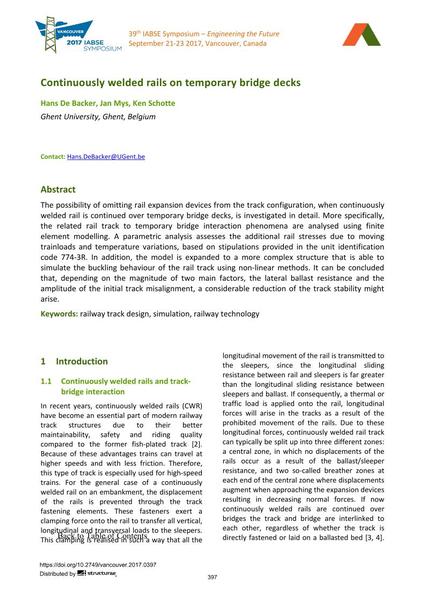Continuously welded rails on temporary bridge decks

|
|
|||||||||||
Bibliographic Details
| Author(s): |
Hans De Backer
Jan Mys (Ghent University, Ghent, Belgium) Ken Schotte (Ghent University, Ghent, Belgium) |
||||
|---|---|---|---|---|---|
| Medium: | conference paper | ||||
| Language(s): | English | ||||
| Conference: | IABSE Symposium: Engineering the Future, Vancouver, Canada, 21-23 September 2017 | ||||
| Published in: | IABSE Symposium Vancouver 2017 | ||||
|
|||||
| Page(s): | 397-404 | ||||
| Total no. of pages: | 8 | ||||
| Year: | 2017 | ||||
| DOI: | 10.2749/vancouver.2017.0397 | ||||
| Abstract: |
The possibility of omitting rail expansion devices from the track configuration, when continuously welded rail is continued over temporary bridge decks, is investigated in detail. More specifically, the related rail track to temporary bridge interaction phenomena are analysed using finite element modelling. A parametric analysis assesses the additional rail stresses due to moving trainloads and temperature variations, based on stipulations provided in the unit identification code 774-3R. In addition, the model is expanded to a more complex structure that is able to simulate the buckling behaviour of the rail track using non-linear methods. It can be concluded that, depending on the magnitude of two main factors, the lateral ballast resistance and the amplitude of the initial track misalignment, a considerable reduction of the track stability might arise. |
||||
| Keywords: |
simulation railway track design railway technology
|
||||
